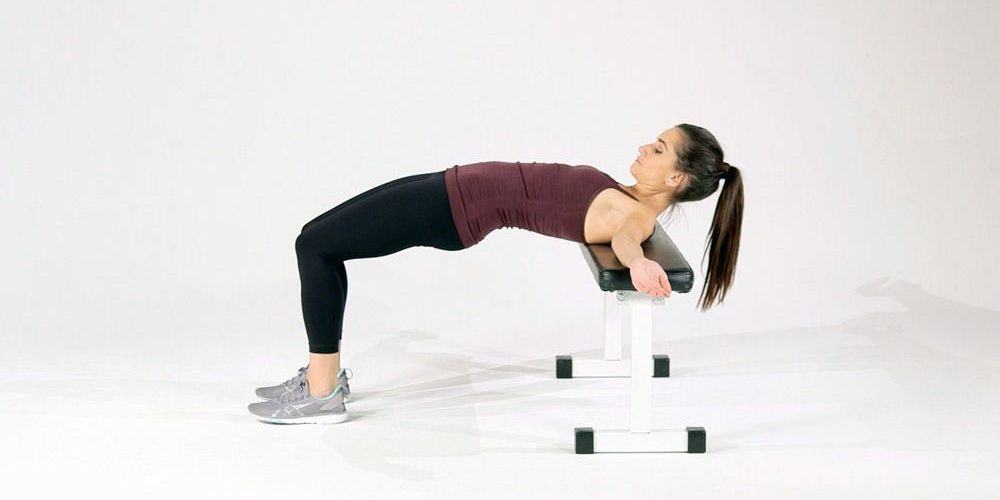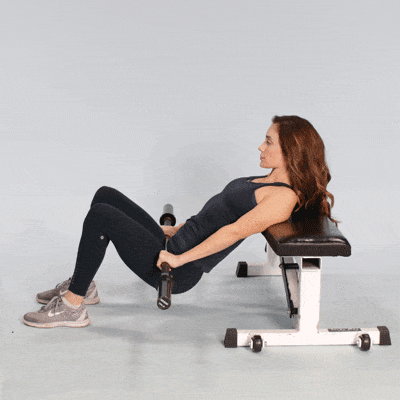Kas Glute is a barbell exercise where you lift your hips and tone your lower body area and glutes. It might sound unfamiliar, but it has its roots in some popular barbell exercises.
Kas Glute Bridge
The Kas glute bridge is a modified version of the barbell hip thrust. There’s not much difference between the Kas glute bridge vs. hip thrust setup. The Kas glute bridge involves a smaller range of motion and amount of power.
Doing a full hip thrust allows your body to fold and use more power to drive the weight up, and you can do seemingly much bigger loads. While with the Kas glute bridge, you’re going into a much shorter range of motion and targeting just the glutes, and you’re not allowing the body to be involved in the same way.
Findyourgym.ae helps you find the best gyms in Dubai for mastering Kas Glute bridge.
Kas Glute Bridge Benefits
The Kas glute bridge primarily works your glutes — the gluteus Medius, gluteus minimus, and gluteus maximus. All three muscles are essential for powering and stabilizing your body while you walk, run, jump, and stand.
There are several important benefits of the barbell glute bridge, including:
- » Warms up glute muscles for other exercises.
- » Tone gluteal muscles.
- » Increase the effectiveness of the workout.
- » Strengthening core muscles
- » Improve performance in other exercises.
- » Contributes to decreased back pain.
- » Simple enough to do at home.
How to Do the Kas Glute Bridge
The Kas glute bridge is a slower, less explosive twin of the hip thrust and more intense than a standard glute bridge. Still, some important tweaks can help you overcome this particular bridge.
Equipment needed
- ♦ Weight bench, step deck, or couch
- ♦ Weight (barbell, heavier dumbbell, kettlebell) that you can hold at your hips
Instead of a weight bench, you can use your sofa, bed, a small table, or an exercise ball. You can use any other flat, comfortable surface that won’t move when applying pressure.
You can use a kettlebell or even dumbbells for the Kas Glute bridge if you don’t have a barbell or a weight bench. While using these, Ensure that the weight is either in the center of your body or evenly distributed.
Instructions
The Kas glute bridge is a slower, less explosive twin of the hip thrust and more intense than a standard glute bridge. Still, some important tweaks can help you overcome this particular bridge.
- Sit on the floor with the center of shoulder blades resting against a bench or box, knees bent and feet planted on the floor slightly wider than hip-width apart. Place an (optional) barbell or dumbbell in the hip crease and hold with both hands.
- Keep lower back flat, chin tucked, gaze forward, engage glutes, push through heels, and raise the barbell to the ceiling by extending hips to reach the starting position. Knees should be in line with heels and bent at 90-degree angles, and the body should form a straight line from shoulders to knees.
- Keeping lower back flat and knees stable, slowly lower hips two to three inches. Then, push through heels and slowly raise the barbell by extending hips, making sure to use glutes rather than back to perform the movement.
- Continue lifting hips until body forms a straight line from shoulders to knees to return to the starting position.
Pro tip
Go slow in a small range of motion. It isn’t an isometric move, but the movement should be tiny to isolate your glutes longer.
Keep your shins vertical as much as possible. You activate your quads as you bend your knees and your shins come out of the vertical position. You want to leave them out of this one.
How To Avoid Injury While Doing The Kas Glute Bridge
Injuries are never fun, but they are avoidable. Good form is always going to be key, especially when you’re working with weight-based exercises. Here are some form tips:
- ♦ Focus on keeping your movements controlled.
- ♦ Stay aligned─ Keep your knees over your ankles and in line with your hips.
- ♦ Try it without weights the first time.
- ♦ Keep your balance.
- ♦ Use your base as leverage.










Comments 0